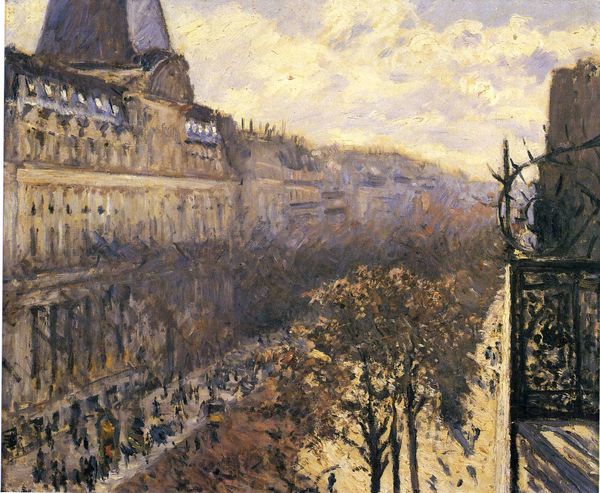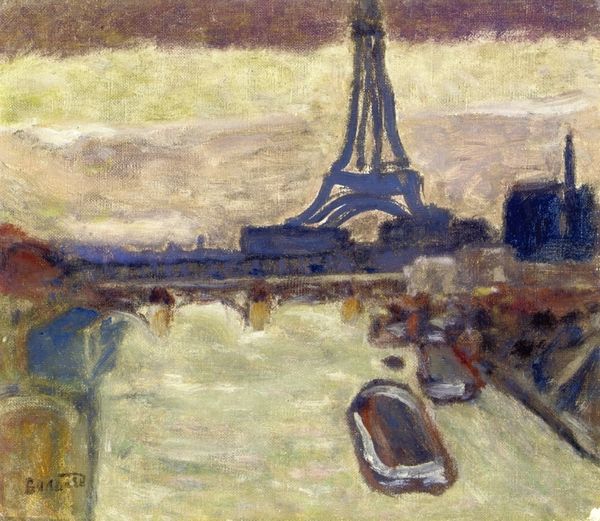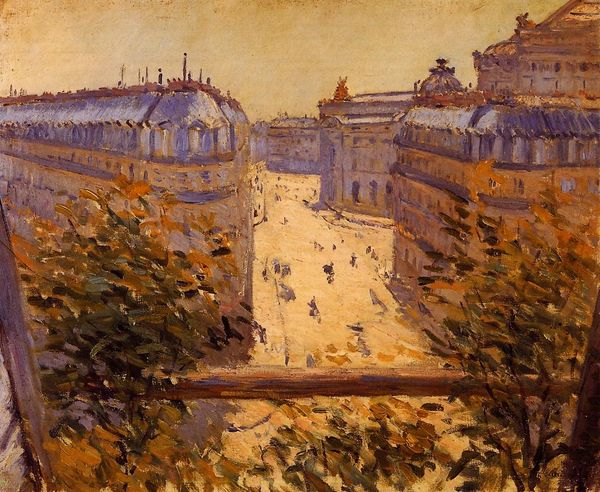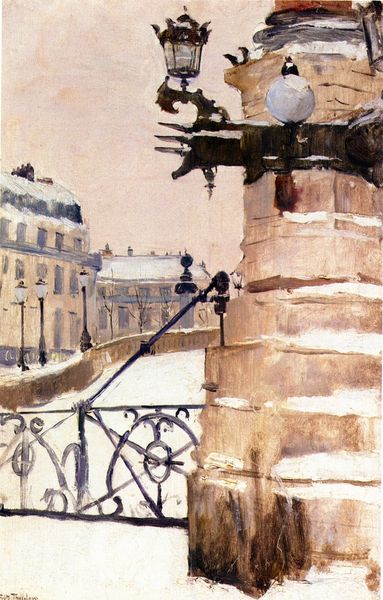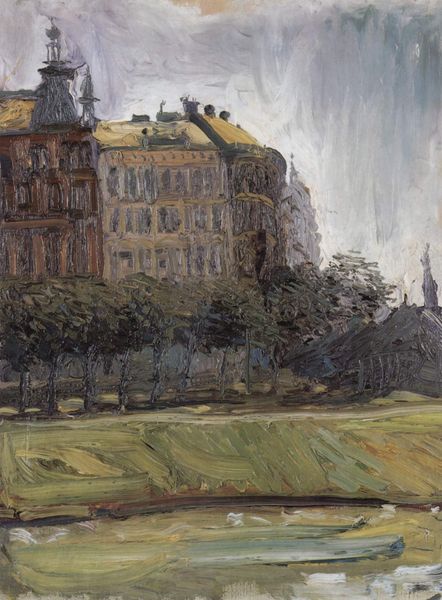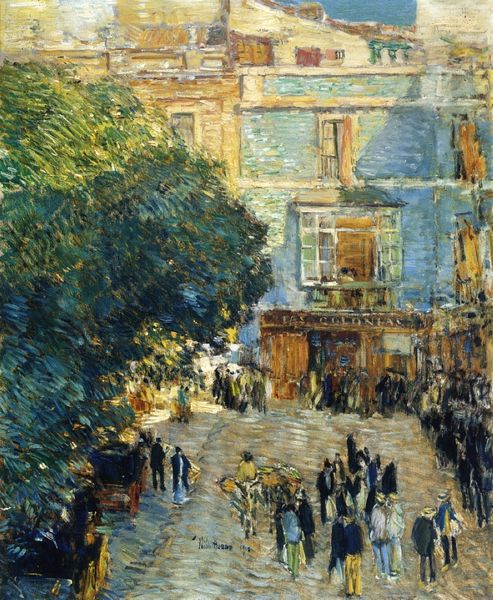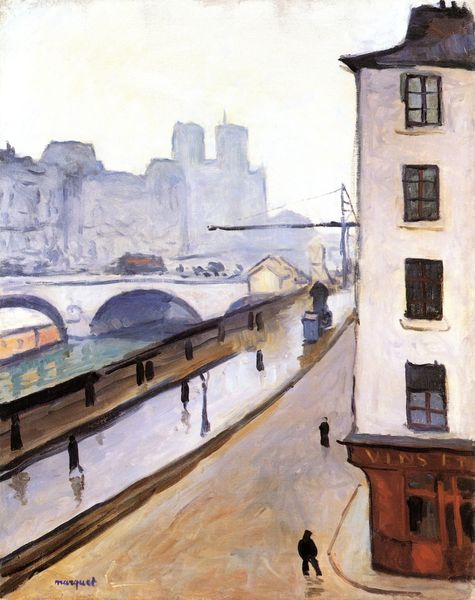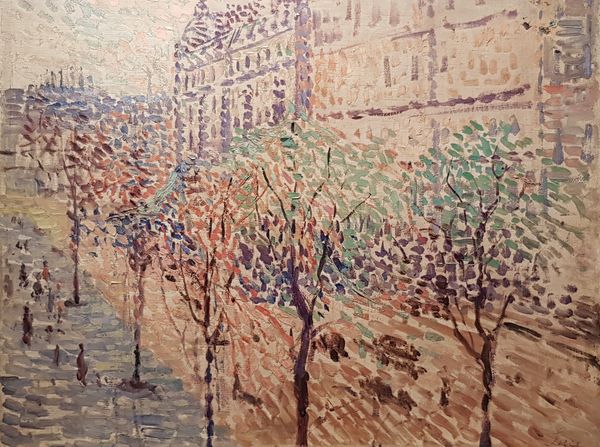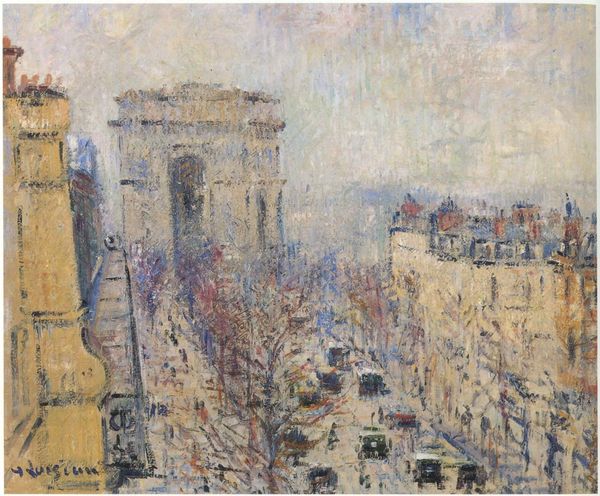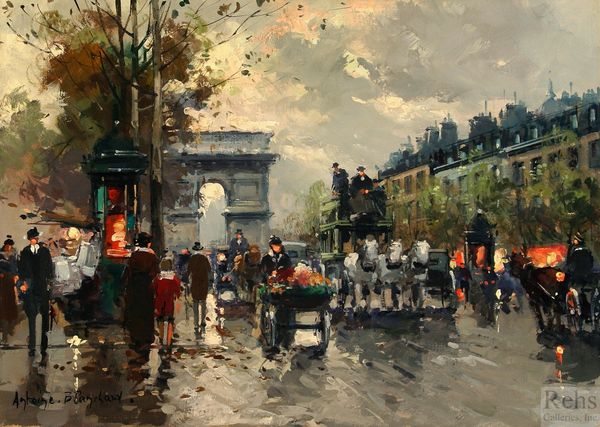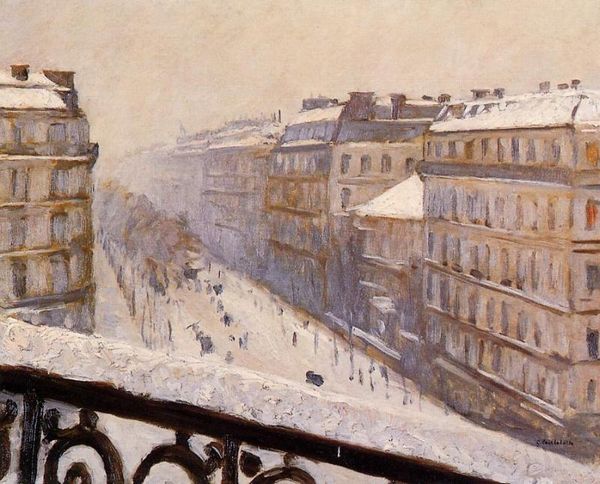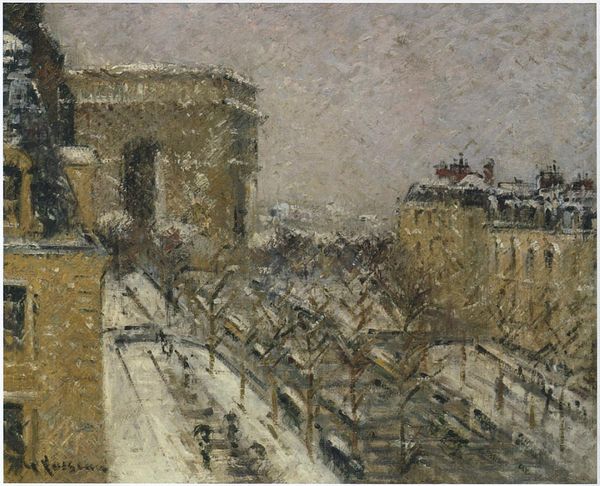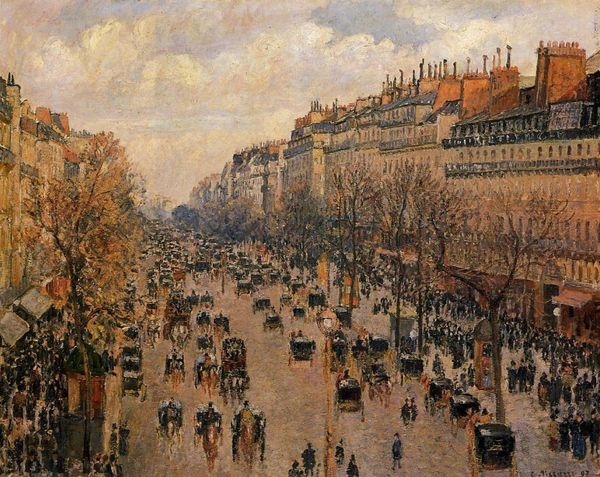
Dimensions: 39 x 55.2 cm
Copyright: Public domain
Curator: Gustave Caillebotte gives us, in 1881, "A Balcony in Paris," rendered with oil paints and likely *en plein air*, don't you think? Editor: Immediately I’m drawn to the ironwork. The way Caillebotte emphasizes the decorative metal—it’s as though we are meant to feel confined and protected at once. Kind of poetic, no? Curator: Definitely a prominent feature! It seems the ironwork serves almost as a proscenium framing the cityscape beyond. Do you feel that Caillebotte used that positioning to engage us? Editor: Oh, absolutely. Think about the Paris of that time: Hausmann’s renovation, the creation of these very balconies that became viewing platforms, a stage for the privileged classes to observe, comment on, but also distance themselves from the bustling modernity beneath. Curator: Yes, that position is also slightly aloof; the artist uses this perspective in a way that’s far from immersive. It reminds me how, when you’re at the ballet, the stage and the crowd blur into one collective of energy and artistry! Here, the balcony is both the boundary and the vantage point. Editor: Precisely! The brushstrokes capturing the buildings across the way suggest a dreamlike haze. Caillebotte certainly brings attention to societal boundaries. This balcony allows a comfortable distance and separation from society and all of its inhabitants. Curator: The colours create a subdued mood overall, what with these browns and creams dominating! Almost melancholy. He definitely downplays the dynamism one might expect from a city scene. I was kind of expecting bright flashes from Parisian buildings that have sunlight touching them! Editor: It's interesting how a seemingly straightforward city view can be loaded with historical and social implications, huh? It urges us to think critically about art as social commentary. Curator: True. It does seem like Caillebotte did an extraordinary job playing with our perceptions of place and privilege here.
Comments
No comments
Be the first to comment and join the conversation on the ultimate creative platform.
